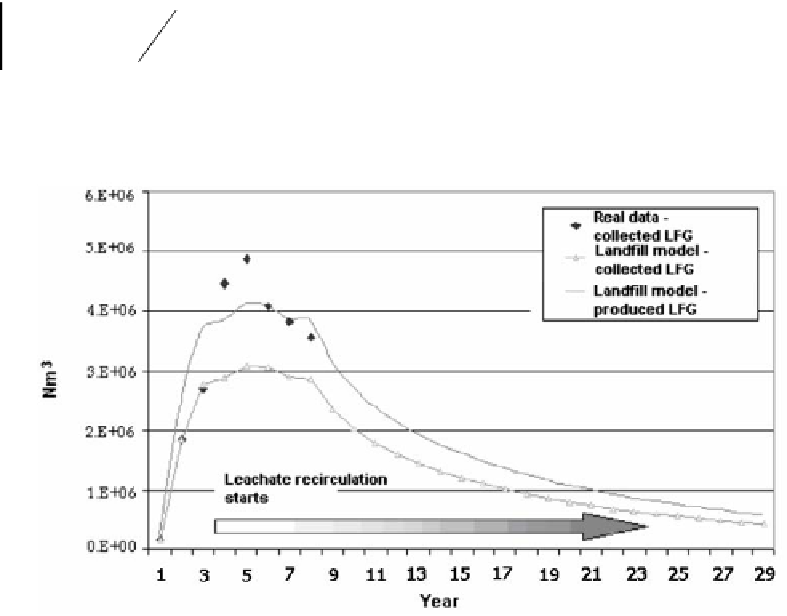Environmental Engineering Reference
In-Depth Information
Table 11. Waste component characterisation, input parameters for Scholl Canyon
model and amount of MSW landfilled yearly in the analysed site
Material
Mass composition [%]
Lag time [year]
K[1/year]
Year
MWS [t]
Organic matter
15,97
0,3
0,69
1
9.883
Paper and cardboard
20,47
1
0,14
2
94.308
Plastics
19,54
-
-
3
80.600
Textiles
23,05
5
0,05
4
47.311
Pruning scrap
4,37
0,3
0,69
5
49.598
Wood
4,38
5
0,05
6
36.544
Glass and inert
9,53
-
-
7
25.020
Metals
2,69
-
-
8
28.413
The application of the previously described Scholl Canyon equation based model,
applying a LFG collection efficiency of 0,75, supplied the results shown in Figure 11, which
are compared with the real data collected at the existing reference landfill. As a matter of fact
the model fits the real data properly in the period before starting the leachate recirculation
(the third year), but it fails after leachate recirculation starts. So, in order to fit the real data
after the third year, it is necessary to introduce a proportional coefficient β between reaction
rate for a conventional landfill and a landfill with leachate recirculation, defined as reported
in Equation 13. It has been assumed that the LFG generation potential remains the same in the
case of presence or absence of leachate recirculation.
k
k
=
LR
β
(13)
CV
where, k
CV
= LFG generation rate constant for the conventional landfill [1/year]
k
LR
= LFG generation rate constant for the landfill with leachate recirculation [1/year]
Figure 11. Comparison of model results and collected data for the existing reference landfill.























